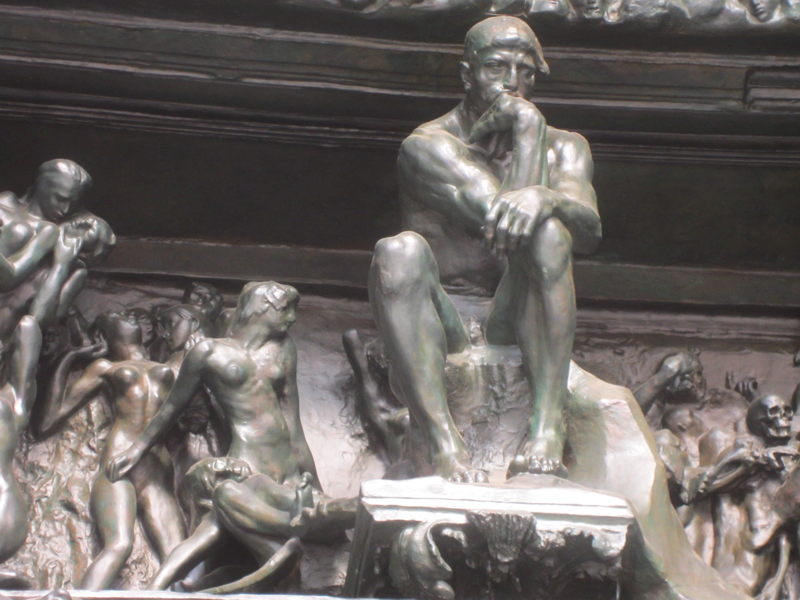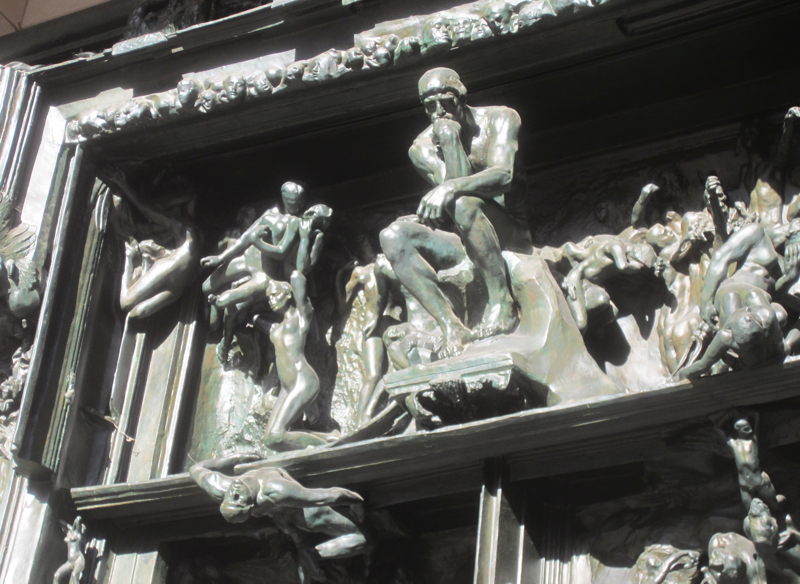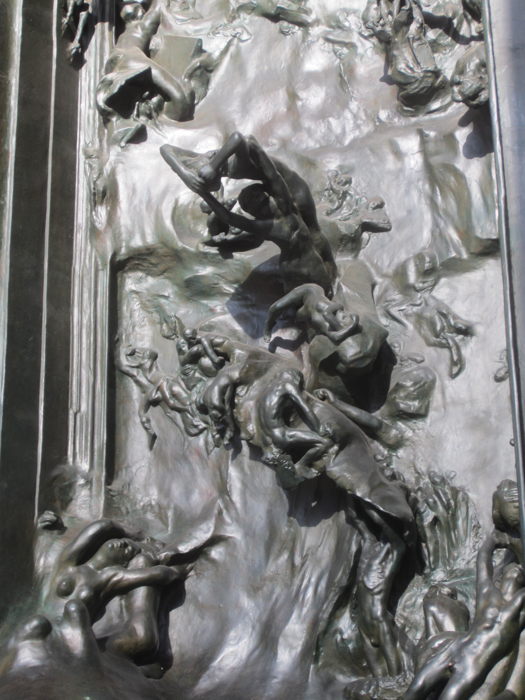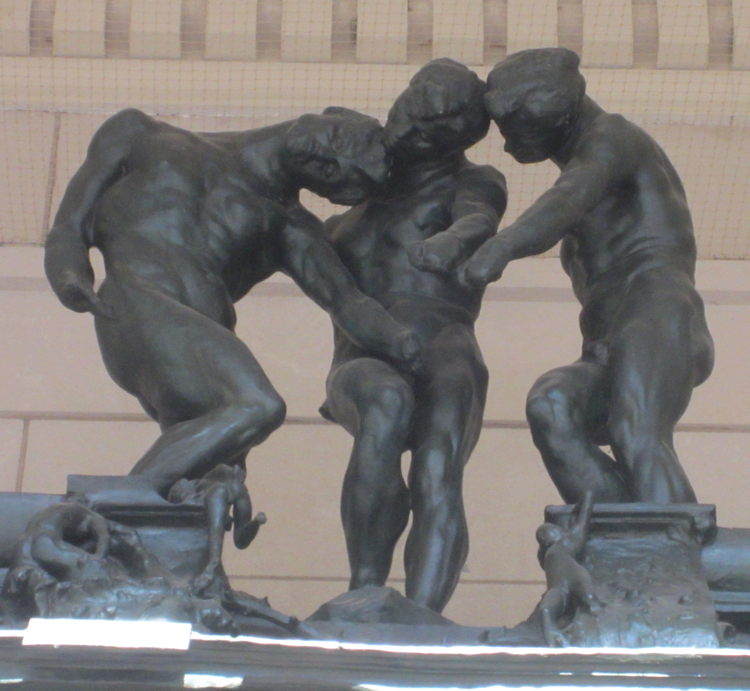Rodin: Gates of Hell
|
Rodin: Gates of Hell The Gates of Hell is a monumental sculptural group work by French artist Auguste Rodin that depicts a scene from "The Inferno", the first section of Dante Alighieri's Divine Comedy. It stands a 20'H × 13'W × 3'H and contains 180 figures. The figures range from 5" high up to more than one yard. Several of the figures were also cast independently by Rodin. The sculptural was commissioned by the Directorate of Fine Arts in 1880 and was meant to be delivered in 1885. Rodin would continue to work on and off on this project for 37 years, until his death in 1917. The Rodin Museum, which is located on the the Benjamin Franklin Parkway in Philadelphia's museum district, is a modern building designed by two French Architects. It is immediately identifiable thanks in part to a model of "The Thinker" in the front courtyard, and boasts the best collection of Auguste Rodin's crafts found outside of France. Dealing mostly in sculpture, the tone for the museum is set right at the entranceway, where you will pass straight through The Gates of Hell, an eerily sculpted entryway. Photo 62, Nov 2003 |

|
|
Gates of Hell Note Miniature of "The Thinker" Rodin later decided to make "The Thinker" a discrete larger sculpture. Photo 59, Nov 2003 |

|
|
Gates of Hell Note Miniature of "The Thinker" Photo 66, Nov 2003 |

|
|
Gates of Hell Note Miniature of "The Three Shades" Photo 60, Nov 2003 |

|
|
Gates of Hell
Photo 61, Nov 2003 |

|
|
Gates of Hell
Photo 64, Nov 2003 |

|
|
Gates of Hell
Photo 67, Nov 2003 |

|
|
Gates of Hell
Photo 72, Nov 2003 |

|
|
The Gates of Hell Visitors once entered through a cast of The Gates of Hell, located at the main entrance to the museum, which is no longer used. This massive 5.5-m-tall bronze doorway was originally created for the Museum of Decorative Arts (which was to have been located in Paris but never came into existence). Rodin sculpted more than 100 figures for these doors from 1880 until his death in 1917. This casting is one of the three originals; several others have been made since. Several of his most famous works, including The Thinker, are actually studies for these doors which were later expanded into separate works. The Gates of Hell (French: La Porte de l'Enfer) is a monumental sculptural group work by French artist Auguste Rodin that depicts a scene from "The Inferno", the first section of Dante Alighieri's Divine Comedy. It stands at 6 metres high, 4 metres wide and 1 metre deep and contains 180 figures. The figures range from 15 centimetres high up to more than one metre. The sculpture was commissioned by the Directorate of Fine Arts in 1880 and was meant to be delivered in 1885. Rodin would continue to work on and off on this project for 37 years, until his death in 1917. The Directorate asked for an inviting entrance to a planned Decorative Arts Museum with the theme being left to Rodin's selection. Even before this commission, Rodin had developed sketches of some of Dante's characters based on his admiration of Dante's Inferno. The Decorative Arts Museum was never built. Rodin worked on this project on the ground floor of the Hôtel Biron. Near the end of his life, Rodin donated sculptures, drawings and reproduction rights to the French government. In 1919, two years after his death, The Hôtel Biron became the Musée Rodin housing a cast of The Gates of Hell and related works. Photo 37, Nov 2014 |

|
|
Part of The Gates of Hell, with the central figure later to become a larger stand alone sculpture, The Thinker
Photo 38, Nov 2014 |

|
|
Part of The Gates of Hell, with the central figure later to become a larger stand alone sculpture, The Thinker
Photo 42, Nov 2014 |

|
|
Part of The Gates of Hell
Photo 40, Nov 2014 |

|
|
Part of The Gates of Hell, on the top of the gates, later to become a larger stand alone sculpture, The Three Shades Photo 41, Nov 2014 |

|